
LEER EN ESPAÑOL: Pasaporte al sueño americano: deudas y falta de oportunidades hacen que los guatemaltecos sigan viniendo
HUHUETENANGO, Guatemala — Amidst the chaos of third-graders getting ready for recess, a small empty desk stands out. The child who used to sit there is gone, having left for the United States with his father.
In another classroom, four girls work together to fix their costume for the school’s carnival. The rest of their ninth-grade class has dropped out — some to go to the U.S., others because their families couldn’t afford school any longer.
In a neighboring town, a teacher gardens to empower young women after the village’s only secondary program closed due to a lack of students.
Since October 2016, more than 720,000 unaccompanied minors and parents traveling with children have turned themselves in to Border Patrol agents along the U.S.-Mexico line. An additional 110,000 have gone to ports of entry to seek refuge. About 40% are from Guatemala, the largest single group.
It’s not clear how many will end up seeking asylum, but in fiscal 2018 nearly 20 percent of migrants from all countries claimed to a border officer they feared returning to their home country.
For families in Bulej and Yalambojoch — indigenous towns near Guatemala’s border with Mexico — leaving for the United States is seen as a last choice, propelled by a cycle of debt that only fuels more migration. And while it’s too soon to predict the long-term impact of family migration, some of these villages are losing their future as the younger generation heads north.
Many of those who stay behind face a heavier workload — they need to care for younger siblings and tend house while their mothers work in the fields or fetch wood, tasks that typically belonged to their husbands.
Every week, residents estimate, at least 10 parents, each with a child or two, leave the small villages.
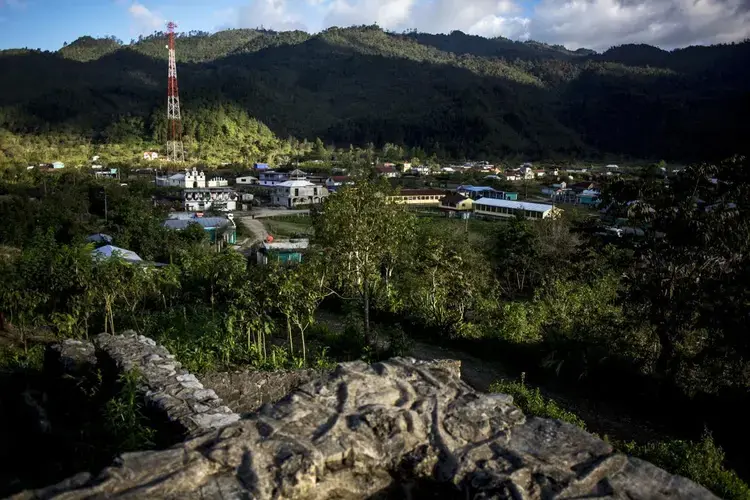
President Trump has called the current numbers a crisis and a national emergency. He has threatened to shut down the U.S.-Mexico border and shifted hundreds of customs officers from the legal ports of entry where migrants present themselves to helping Border Patrol agents process families crossing illegally.
But the numbers keep rising. In March alone, agents made a total of 92,600 apprehensions — the highest in a decade. Nearly 63,000 were family groups and unaccompanied minors.
In Yalambojoch, not even the death of 8-year-old Felipe Gomez Alonzo, who died in Border Patrol custody on Christmas Eve, deters others from following. His uncle and cousin left a week after Felipe’s funeral. It was his fate, the townspeople reason. It won’t happen to them.
In the end, the stories of those who make it and the need to leave are more powerful. As some in the villages say, children have become their passports to the American Dream.
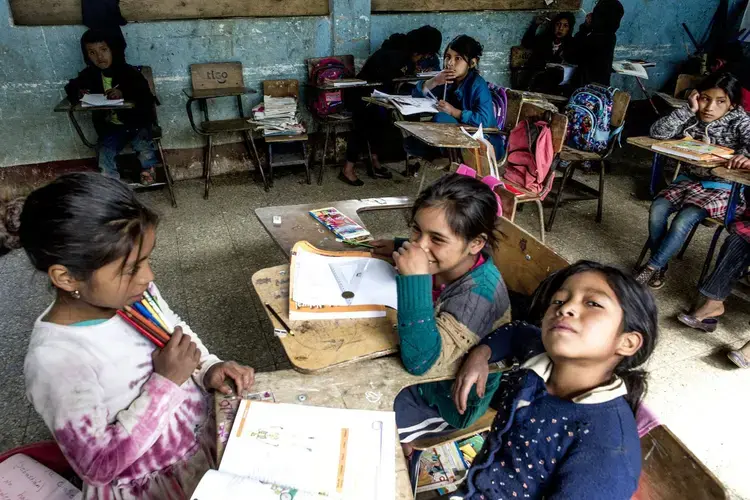
Debt-Driven Migration
Some Sundays in Yalambojoch, an enganchador comes to town from neighboring Bulej to hawk his services. His job: to help people get to the United States.
It will be easy and affordable, he promises in the villagers’ native Chuj language, amplified through a loudspeaker attached to a pole. Residents pay a few cents to make announcements over the speaker, usually about clothes or phones for sale, brought from the U.S.
The enganchador calls out his cellphone number and waits. He doesn’t announce that he has special deals for parents traveling with children, but residents know that he does. It’s rare to find single men leaving rural villages like this alone; it’s not worth the risk or the cost.
“People migrate for different reasons,” said Elizabeth Oglesby, an associate professor of Latin American Studies at the University of Arizona. “There are certainly large numbers of people who are coming with their children because they feel the children are in danger in Central America.
“It is also true the coyotes have this strategy where they say if you come with a child, you come and turn yourself in to the Border Patrol, you are more likely to be released, not deported and not put in detention.”
That strategy is just the latest reaction to U.S. efforts to crack down on illegal border crossings. First, in the mid-1990s, border enforcement was beefed up along the most populated stretches of the border, pushing migrants to cross treacherous stretches of the desert.
Deaths of border crossers soared and instead of going back and forth between work and family, the men started staying in the United States. Women soon followed, many times to join a husband already here.
In 2014, rumors swept Central America that minors or parents who showed up in the U.S. with children would be allowed to stay — in reality, they were allowed to remain until their immigration hearings.
That was the beginning of family migration.
Then last year, the U.S. government separated more than 2,500 children from their parents at the border in a move the Trump administration hoped would deter families from coming. It didn’t.
“The whole argument that you can ... ratchet up punishment against the migrant, force them to cross the desert and that somehow that will deter people from migrating is false,” Oglesby said. “It doesn’t deter people from migrating. It redirects the migration and changes its character.”
As border enforcement has increased, so has the cost to get across, jumping from less than $2,000 in the 1990s to up to $12,000 for a viaje de lujo, a luxury trip that ensures passage to the United States via bus and vehicle, with very limited walking. That doesn’t include interest rates of 5 to 12 percent, compounded monthly.
Migrants often borrow those fees to pay the coyotes, or guides, who lead them across the border, and they depend on their new jobs in the U.S. to pay it back. If they don’t make it across or are deported, many see no choice but to borrow more and try again, creating a cycle of debt that can drag down an entire family.
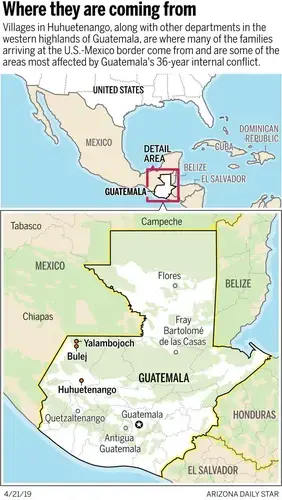
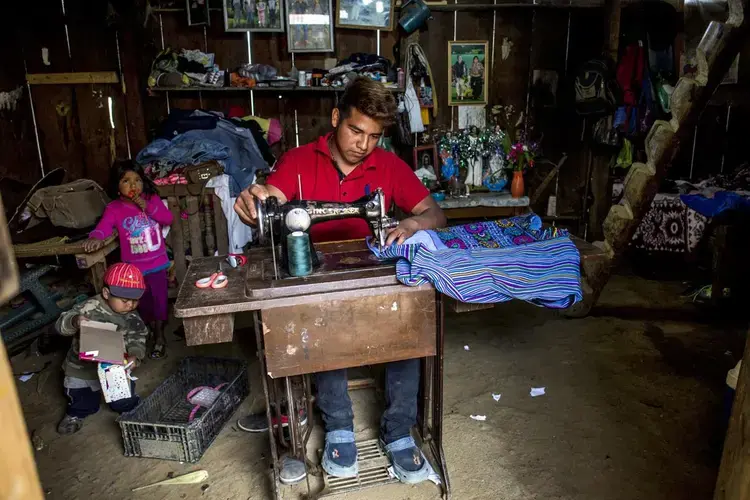
Pascual Alonzo, 19, and his family at one point owed about $20,000 — a debt impossible to repay earning a few dollars a day in Guatemala as carpenters and farmers.
His dad tried to cross three times through the Arizona desert and Texas, only to be sent back. His smuggling fees included $2,000 they had to pay the cartels once they reached the U.S.-Mexico border for permission to cross through their territory.
Then in 2014, when Pascual was 14, he decided to leave for South Carolina.
“I saw my parents suffering a lot. We had no money, we had no way of buying food to feed my siblings,” he said. And work was scarce.
As a minor, he was told, he would be housed in a shelter and all he needed was a sponsor to get him out, enroll him in school and take him to his court appointments. If he did all that, he thought he would get a work permit and be able to stay.
He made it, found work in restaurants and lived with a family that asked for very little in living expenses. But the couple of hundred dollars he sent back each week wasn’t enough to put a real dent in his family’s $20,000 debt. Even worse, Pascual’s sponsor, someone from the neighborhood back home, didn’t do the tasks he had agreed to do. Pascual was deported last August.
He was devastated — for his parents even more than for himself.
“I cried for them,” he said. “I wasn’t able to help them enough and I still had debts to pay. My mother wanted me to study, to learn English so I could get a better job and build her a house.”
“De material,” she chimed in. Of concrete.
Like many families caught in the cycle of debt, his father decided to try again.
This time he had a guarantee: He would travel with his 15-year-old son, Pascual’s younger brother. He heard immigration officials would release him after a few days.
They made it to Tennessee last December. But the cost to get there was almost another $2,000, pushing their debt to about $22,000.
For families like theirs, “Migration is no longer about reaching the U.S. to find a better life. It’s about this obligation that you have to make it because you are looking at great destitution if you can’t pay the money back,” said Richard Johnson, a University of Arizona doctoral candidate who researches this issue in Guatemala.
“Deportation, more than serving as deterrence, generates deeper incentives for other members of the family to migrate,” Johnson said.
People risk losing their land, their house and whatever little they have as they use it as collateral to secure a loan. The pressure can be so great it can lead to suicide.
Nearly a year ago, Magdalena Pérez’s husband killed himself, overcome by the family’s mounting debt. He owed nearly $8,000 he couldn’t repay.
The Pérezes’ daughter had left days earlier with her own child. Upon hearing the news of her father’s death, the young woman cut off the monitoring bracelet immigration officials attached to her ankle while she awaited her hearing. “Who is going to help my mother if I get deported?” she reasoned at the time.
She’s still in Tennessee, trying to live a quiet life and avoid detection — and deportation.
In March, her brother headed north to join her, bringing along the 9-year-old niece he is raising. The little girl’s father had died soon after going to the U.S. himself, and her mother migrated to Mexico in hopes of making money to send home. Because she was not traveling with a parent, the family said the two were separated and the girl was sent to a shelter in El Paso.
She called her aunt from the shelter, crying and afraid.
Her grandmother wants her sent back to Guatemala. And it appears Pérez’s son will be deported, pushing their debt even higher.
“First my husband dies, then my son leaves, my granddaughter leaves, what’s going to become of me?” the 50-year-old asked as she wiped away tears. “What’s going to happen to me?”
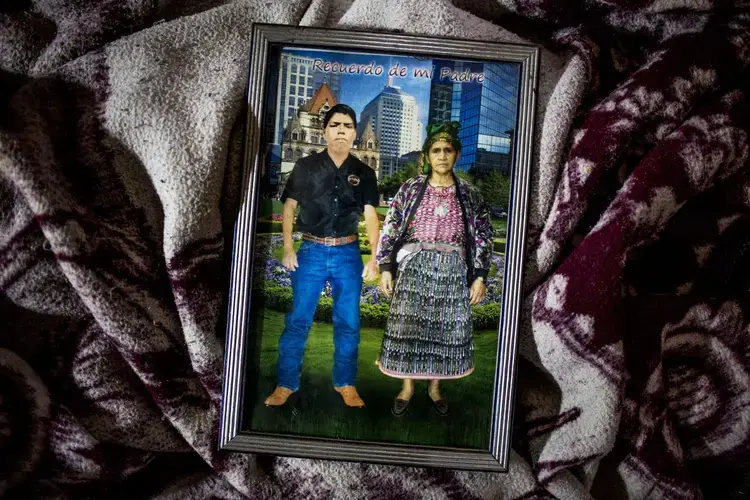
How It All Began
Understanding migration from Guatemala’s indigenous communities means going back to the 1980s. That was the beginning of an internal conflict that claimed more than 200,000 lives — more than conflicts in El Salvador, Nicaragua, Chile and Argentina combined. An additional 1.5 million people were displaced, a quarter of the country’s population.
Entire villages like Yalambojoch and Bulej emptied as soldiers massacred their neighbors.
Adjacent to Yalambojoch is San Francisco, where 350 people were killed in 1982. Reports from that time describe soldiers smashing children’s heads on rocks and poles, raping women and burning them alive, shooting or beheading men.
Many in these villages today are sons or daughters of the people killed in that conflict.
Some families started to return from Mexico in 1996 after peace agreements were signed. But while they had land, they lacked nearly everything else.
The government failed to address the structural conditions that had spurred the conflict — extreme income inequality, corruption, the lack of an effective judiciary. People came home to find an economic crisis and few jobs.
The forced displacement, and a country unprepared for its citizens to return, became a template for future migration, said Ruth Piedrasanta, an anthropologist and researcher at Rafael Landívar University in Guatemala City.
An entire generation had learned to live in another country. They no longer felt tethered to home when times got tough, and suddenly a future in the United States felt like a real possibility.
That wandering spirit crystallized with the arrival of Mexican and U.S. recruiters, who showed up with promises of jobs when Mexican workers started talking about unionizing and quitting dirty, back-breaking jobs in poultry plants in the Southeast and meat-packing plants in the Midwest.
“Central Americans were seen as more stable workers,” Oglesby said.
So Guatemalans started leaving again.
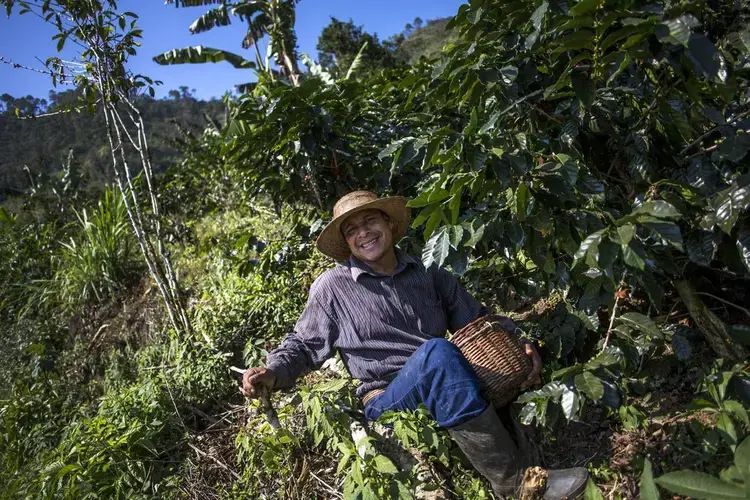
Prudencio Bautista was the first to leave Yalambojoch in 1996. He crossed through Sasabe, Arizona, to work in tobacco farms in North Carolina, and later in poultry plants in Greenville, South Carolina.
“It was tough,” he said as he and a dozen workers he’d hired harvested coffee cherries on his plot of land near Yalambojoch.
“I walked eight nights and eight days. What affects you the most is water. One finishes the water and there’s none. That’s why a lot of people die,” he said, shaking his head.
He went back and forth, each time making a new investment — building his two-story house (at a cost of nearly $20,000 at today’s exchange rate), buying a pickup, a tractor-trailer, a plot of land — until he was deported about 10 years ago. By then, the number of Border Patrol agents had quadrupled to 20,000 since he had first crossed. Sensors, helicopters and drones watched over the border.
“I tried to cross a fourth time,” he said, “but la migra caught me in Florence (Arizona). They locked me up for a month, then deported me back to Guatemala.”
He still thinks of life up north. But now he has two grown children there who beg him not to risk it again. They promise to send him money.
Earnings from growing coffee on small plots are minimal due to lower prices and the spread of coffee leaf rust, a disease that can cost a tree its leaves and its ability to produce beans. Scientists attribute the rust to climate change.
Bautista gets about $70 per 100 kilos, or 220 pounds, he said, and each harvest yields about 2,600 pounds. That’s less than $1,000.
“Right now there’s work harvesting coffee, but this ends in 20 or 25 days and one is left without a job again,” Bautista said in early March.
“You buy a pair of pants, that’s 100 or 120 quetzales. You have to work two days just to buy a pair of pants and there are a lot of kids in a family who require clothes and food, and there’s no money.”
In South Carolina he earned $700 in a week hanging chicken, he said as a group of men stopped by.
“They come to work from another village named El Aguacate,” he explained.
“There are no workers, it’s really affecting us here, but as I said, people are not leaving for pleasure, but out of necessity. Teachers are being left without students, but what are we going to do? ... The only exit we have, our only alternative, is to go to the United States.”
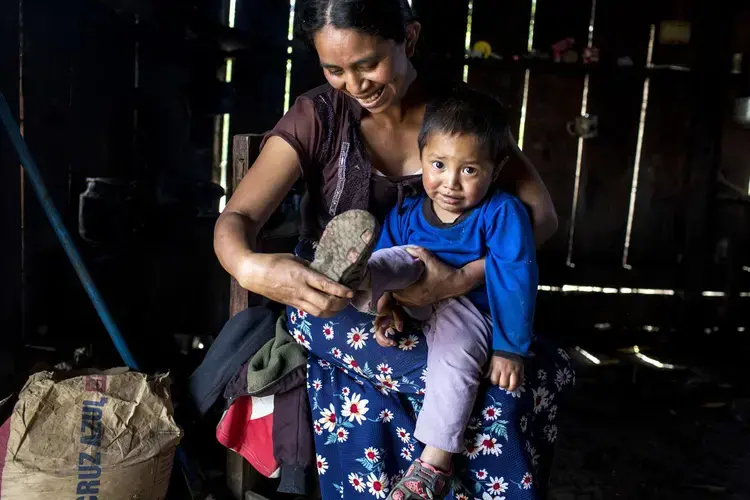
Inequality and Poverty
Income inequality in Guatemala ranks among the highest in the hemisphere, according to USAID, especially when it comes to indigenous communities most affected by the country’s armed conflicts.
While about 60% of the nation’s population lives in poverty, in Huhuetenango it’s nearly three-quarters.
At 46.5%, Guatemala has the worst chronic malnutrition rate in the hemisphere and the sixth-worst in the world — and it soars to 58% for the indigenous population.
Just to reach these villages takes more than 10 hours from the capital. The reason isn’t the distance, but the narrow, winding roads full of potholes.
There are no major hospitals, few schools and limited access to food.
Money comes mostly from the outside. In 2018, Guatemalans received more than $9 billion from relatives living abroad, mostly in the U.S.
Over time, communities became reliant on remittances. They came to believe the only way to achieve a higher standard of living was to send someone north.
“Any person’s dream is to have home, a car, land and to live, perhaps not too comfortable, but to have the basics,” said Mateo Domingo Lucas, a school principal in Bulej.
“And that’s the dream of the youth; the children, too, are starting to say, ‘I’m going to leave.’ They say you live better, eat better. They say you can buy a pair of shoes,’” he said. “Fighting against that dream, to try to convince them to stay, is challenging.”
Some of the departments (Guatemalan states) with the highest poverty or malnutrition rates are also those where a lot of migrants are coming from.
Percentage of population living in poverty in 2014
ince January, Lucas’ school of 600 students has lost more than two dozen of them. The desks continue to empty out, and the void is felt in each classroom.
The pressure increases as each new concrete home rises — some are as expensive as $50,000 — gradually closing in on the few remaining wooden shacks. Every time another goes up, families want one even more.
“The block fever,” co-writes Lizbeth Gramajo Bauer, an anthropologist at Rafael Landívar University, “it’s a symptom, effect and cause of migration.” Migration, she says, leads to more migration.
Catarina Domingo’s husband, Pedro Paez, hadn’t left before because he didn’t want to die in the desert. What would she do with five children and no husband?
“I didn’t want to be apart from my children, but it’s because of the need,” she said in broken Spanish. “Because we have no land, we have no money to build a house.”
Her home is one of the few remaining in Yalambojoch made out of wood with tin roofs and dirt floors.
Paez left recently with their 9-year-old daughter, Olga. He called six days later and Olga sounded happy, Domingo said. They were in Tennessee after spending three cold nights in a Border Patrol station and then at a church, where they were given a warm meal and a shower.
Domingo said Olga wanted to go and was happy when they left. But teachers say a lot of the time children don’t want to leave. Parents lure them with promises of new toys, restaurants and a nice school.
Páez borrowed nearly $3,000 from relatives who are charging him 5% interest. “And I don’t know how much more he has borrowed from his friend once he arrived,” Domingo said.
A relative also lent her about $65 to cover household expenses until Paez starts sending money back.
“He didn’t leave me a penny,” she said. Every two weeks, she spends about $20 on corn and $14 on beans, plus more on soap, eggs and other needs that pop up.
While families seem to know that bringing a child is the most likely way to get to the U.S., misinformation abounds about why that is. Many erroneously believe it’s a special U.S. program under Trump that first allowed unaccompanied minors to stay in the U.S., and that now parents traveling with children can stay. They don’t have to hide anymore, they say. They can go directly to the authorities.
Domingo says it saddens her to hear people say her husband will eventually get deported, but that the government will keep her daughter.
“Maybe it’s true, but one doesn’t know what the government over there is going to say,” she said.
In the meantime, she’ll have to find a way to sustain the family until he finds a job. And she has Candelaria López, her 15-year-old daughter, at home to help.
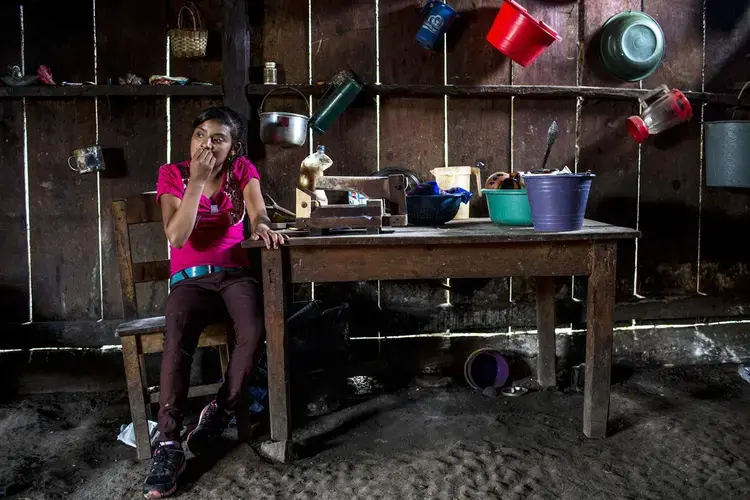
Those Who Stay Behind
Rural villages like this one are full of contradictions.
Yalambojoch is surrounded by pine-topped hills not that different from the Carolinas, where many local villagers migrate.
A crystalline river runs east of town and the air is fresh and clear. In the mornings, as roosters start crowing and people head outside to wait for pickups that will take them to the fields, the fog slowly lifts and sunlight pours in.
At night, the dark sky teems with bright stars.
Children play in makeshift soccer fields and use sticks for bats. Many don’t go to school because families have to choose which of their six or seven children to send.
Education doesn’t help feed the family — and seeing others finish college only to end up farming or doing construction work deters them further, teachers say.
A greater, more immediate, return on their investment is for their kids to work in the U.S. and send money home.
For some, education seems so unattainable that they stop dreaming of future careers. Others want to be agricultural engineers and doctors, but know they might also have to go to the “USA,” as they say, sounding the three letters in Spanish. They, too, want to build their own homes.
Candelaria, like most children in these rural villages, appears much younger than her 15 years, a consequence of their limited diet of corn tortillas, beans and only sometimes eggs.
She stopped going to school in 2016 after finishing sixth grade, but her responsibilities intensified after Paez left this year.
Like other girls her age, Candelaria rises before 6 a.m. to grind corn to make her family tortillas before the youngsters go off to school and her mother heads to the field. Then she does the cleaning, the cooking and the laundry.
She has big brown eyes, a warm smile and loves to have friends. But she has no time for herself, always having to look after the others.
She’s considered one of the smartest girls the community center has ever had and is known for an impressive recital about the revolution she gave when she was 5 or 6 before dozens of guests.
“My favorite subject is math. I like to memorize things,” she said as she fixed her siblings a breakfast of eggs and coffee.
When asked if she liked school, she is resolute.
“Even if I had liked it,” she responds, “we couldn’t afford it.”
Later, though, she admits that she would have liked to be a teacher, or maybe a doctor.
Parents need at least $30 a month to send their kids to primary school and twice as much for middle school. The money covers supplies and enrollment fees, among other expenses.
Candelaria said she would like to see more farming opportunities in her community so people wouldn’t have to leave. Better education doesn’t make the top of her list, almost as if she prefers to not think about something so implausible.
While migration can leave girls like Candelaria at home or can force them to grow up without a parent, in the long term it can also mean more opportunities and better living conditions for entire communities — things the state does not provide.
But entire communities are losing their children — and their future — to migration. If the trend holds, and without comprehensive immigration reform, experts say the long-term implications could be grim.
“It’s not migration per se that we should see as a problem. It’s the conditions under which people are being forced to migrate,” said Oglesby, the UA professor.
“Why are families being separated? Because, really, it costs $1,000 or less to get on a plane and go visit your relatives in the U.S. and that’s within the range of most people who are migrating. That’s a lot less than paying $12,000 to a coyote.”
The problem: “People are not allowed to get on that plane.”

Education Resource
Meet the Journalist: Perla Trevizo
The largest single group of Central American parents arriving at the southern border of the United...
- View this story on La Estrella Tucson






